Rolling on the Digital Wave: B2B ecommerce, now representing 17% of all ecommerce sales in 2023, has found its momentum online, offering increased flexibility and reduced sales costs for businesses.
The Future is Now: Gartner forecasts that by 2025, 80% of B2B sales interactions will occur online, highlighting the swift digital evolution from traditional methods to eCommerce platforms.
Buyer's Bliss: Customer expectations are shaping B2B ecommerce trends, with a significant 69% of B2B buyers desiring an Amazon-like shopping experience, showcasing the need for personalized and efficient online transactions.
Crossing the Digital Divide: The distinction between B2B and B2C ecommerce lies in their target audiences and transaction complexities, driving the need for tailored marketing strategies and platform functionalities for B2B companies.
Elevating Engagement: Effective B2B ecommerce marketing strategies, including social media presence, SEO-driven content marketing, and personalized email campaigns, are crucial for attracting and retaining key decision-makers.
B2B ecommerce is on a roll. Representing nearly 17% of all ecommerce sales in 2023, this traditionally offline business has found a foothold on the internet that is growing every year.
But, what is it all about? And, how can B2C sellers get a piece of it?
This guide will give you all you need to know about B2B ecommerce, including what it is, why it’s different from traditional B2B commerce, and tips for creating a successful B2B ecommerce strategy.
What is B2B Ecommerce?
Simply, B2B ecommerce is when business-to-business transactions (AKA B2B sales) happen online.
This is more remarkable for its relative novelty when compared with B2C sales, which went online much more quickly.
The reason for this has more to do with the complexity of sales processes between businesses than with these companies’ resistance to change (though that may factor in for certain industries, too).
What this looks like is sales:
- Between manufacturers and distributors or wholesalers
- Between wholesalers and retailers or resellers
- Between wholesalers and nonprofits or schools
- As a cooperative effort between businesses for consumers (B2B2C)
- Through B2B marketplaces and online portals
For B2B companies, ecommerce has many benefits, including increased flexibility and reduced sales costs. We'll cover the major benefits later on here.
With the right platforms in place to handle the variable pricing, online portals, and reordering processes, B2B ecommerce has become increasingly simple for both buyers and sellers.
B2B Ecommerce Trends and Stats
Gartner predicts that by 2025, 80% of B2B sales between suppliers and buyers will happen online.
That’s a huge change for B2B selling, which has been slower to move online. Sales that happened via phone, email, and fax have followed in the footsteps of B2C, if slowly.
The change seemed to quicken with the COVID pandemic necessitating remote purchasing options. McKinsey found that the number of B2B companies offering ecommerce purchasing was 53% in 2021, growing to 65% in 2022.
In 2023, sales on B2B marketplaces grew 100% year over year, and the combined online sales of manufacturers, distributors, wholesalers, and retailers grew by 17%.
The B2B online sales slice of the overall pie is also growing. B2B ecommerce sales accounted for 14% of all B2B sales and 16.95% of all ecommerce sales in 2023, figures which have only grew year over year.
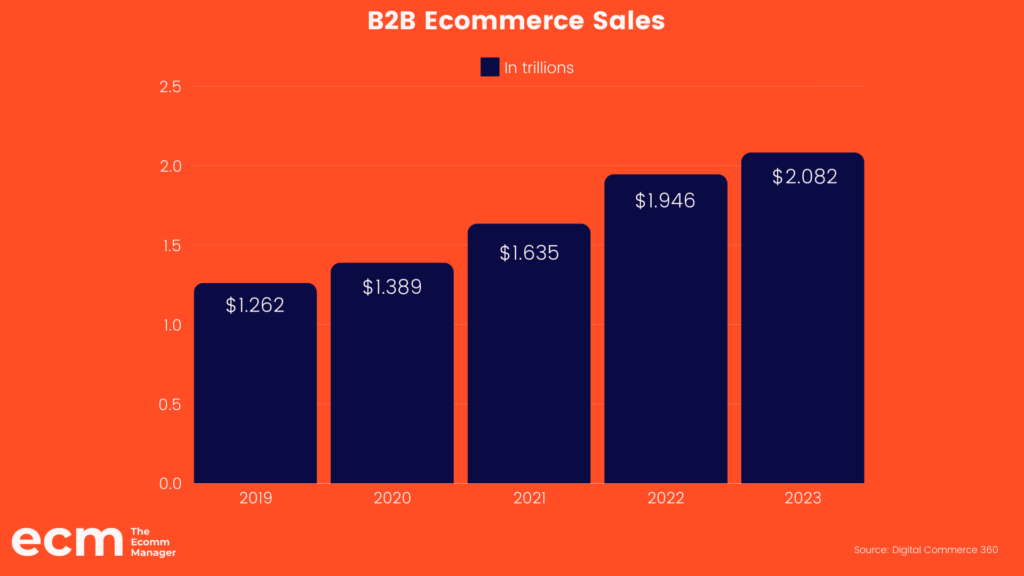
Valued at $2.08 trillion in 2023, B2B ecommerce is a huge market for corporate and business-related product sellers.
From 2019 to 2023, the growth of this market has hovered between 10% to 19% year over year.
This upward trend is driven by consumer behavior and expectations. As one might expect, these buyers are looking for the same sort of experience they get for their personal shopping.
For example, 69% of B2B buyers now expect an Amazon-like purchasing experience.
Further, 59% of B2B shoppers say that personalized engagement based on past interactions is very important to getting their business.
Traditional sales tactics may be going by the wayside, as well. Buyers want an omnichannel experience, like their B2C counterparts, and they don’t always require the help of a human to get it done.
71% of buyers would spend more than $50,000 in a single transaction without needing a sales rep’s assistance. This sort of self-service purchasing was unthinkable not long ago.
These B2B decision makers are using more channels than ever before to figure out what they want to buy.
McKinsey found that while in 2016, they used just five channels (email, in-person, phone, website, and online portal), by the end of 2021 they doubled that to include Google searches, online chat, video calls, and mobile app.
What’s the Difference Between B2B and B2C Ecommerce?
The difference between B2B ecommerce and B2C ecommerce is built right into their names. It’s all about who you are selling to.
B2B ecommerce refers to the online transactions between businesses, while B2C commerce refers to the online transactions between businesses and consumers.
There are several major differences that go beyond the obvious, such as:
| B2B Ecommerce | B2C Ecommerce | |
|---|---|---|
| Definition | Involves transactions between businesses. | Involves transactions between businesses and consumers. |
| Sales cycle | Longer due to stakeholder buy-in and higher values. | Typically shorter and influenced by individual purchases. |
| Marketing focus | Centered around business needs. | Driven by consumer desires and preferences. |
| Decision makers | Requires consensus from multiple stakeholders. | Usually involves fewer decision-makers, often just the consumer. |
| Customer loyalty | High likelihood of repeat customers due to vendor selection complexities. | Consumers may switch brands more readily. |
| Market size | Significantly larger at USD$20.4 trillion. | Smaller in comparison. |
| Purchase motivation | Driven by business needs and long-term relationships. | Often impulsive and based on personal preferences. |
| Complexity of transactions | Generally more complex with contracts and negotiations. | Simpler and quicker. |
| Price sensitivity | Less sensitive, focusing on features and quality. | Highly sensitive with significant influence from promotions and discounts. |
| Customer interaction | More personalized with ongoing support. | Focuses on efficiency and convenience with less personalization. |
How Does B2B Ecommerce Work?
Companies following a B2B ecommerce business model use various software and tools to make their products and services available to their online and IRL buyers.
These tools include websites, mobile apps, computers, smartphones, and kiosks.
B2B ecommerce companies typically offer several payment options at checkout, enabling buyers to complete online transactions easily.
For example, a company may accept PayPal, Google Pay, Apple Pay, Amazon Pay, and several types of credit cards.
With the evolution of B2B ecommerce platforms, these brands can easily build online portals for their customers, with unique pricing and reordering capabilities for the variable nature of B2B selling.
Benefits of B2B Ecommerce
Selling your wares online to other businesses comes with some advantages, many of which are set in comparison to the B2C or DTC model. For DTC brands that want to create a B2B side project, these benefits may be compelling.
- Reduced operational costs. As orders are less frequent and larger, brands can ship orders in larger boxes or pallets that require less packaging per item and cost less in proportion to the order total. This reduction in manual processes extends to inventory and sales operations, as well.
- Access to new markets. By opening up business to a global audience, you can quickly scale your sales without having to proportionally scale shipping operations, as needed in an international DTC strategy.
- Advanced personalization capabilities. Given the deeper set of customer data that B2B brands can capture, your ability to offer more personalized buying experiences is enhanced.
- Scalability. B2B ecommerce platforms are more robust, capable of handling increased demand and order volumes as your brand scales.
- Better customer support. With a lower volume of customers, less frequent order cadence, significantly higher order sizes, and increased customer loyalty, B2B brands can offer more one on one personalized customer support via their online portals.
Types of B2B Ecommerce
B2B ecommerce is a broad term encompassing several types of relationships. One thing these relationships have in common is that all transactions take place via electronic platforms.
B2B2C (the customer-oriented model)
B2B2C stands for business-to-business-to-consumer—a real mouthful!
Under a B2B2C model, one company partners with another company to deliver a product or service to consumers.
DoorDash is a great example. The company has proprietary technology, but it wouldn’t turn a profit if it didn’t have a network of restaurants using its platform.
Another example you’ll see on just about every ecommerce site is Klarna or Afterpay.
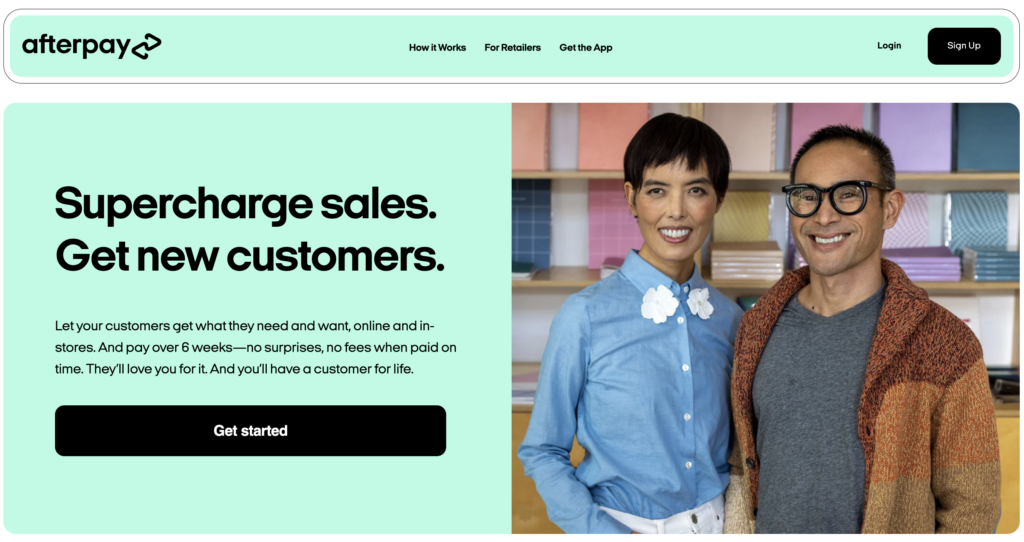
These BNPL (buy now pay later) companies offer consumers the opportunity to split their purchase into four smaller payments. They partner with the merchants to offer this to consumers.
Wholesale (the buyer-oriented model)
Wholesalers buy products in bulk from manufacturers or distributors and sell them to retailers.
For example, a wholesaler may purchase large quantities of pencils or markers and sell them to a retailer specializing in selling office supplies to business customers.
In the DTC model, ecommerce brands cut out the middleman, buying wholesale directly from manufacturers and selling to their customers at retail.
DTC brands can also become wholesalers by creating an online portal for their business customers to purchase at wholesale prices.
Two great examples of wholesale B2B brands are Uline and Alibaba.

Uline sells shipping and office supplies to businesses and warehouses. Alibaba is a wholesale marketplace for retailers to buy in bulk from manufacturers.
Manufacturers (the supplier-oriented model)
Manufacturers use raw materials to produce finished goods at a large scale. They are the top of the B2B food chain, supplying wholesalers, distributors, and DTC brands alike.
While it’s common for manufacturers to sell to wholesalers, many manufacturing companies also sell to other manufacturers.
For example, a company that produces bolts or screws may sell to a company that needs parts for its products.
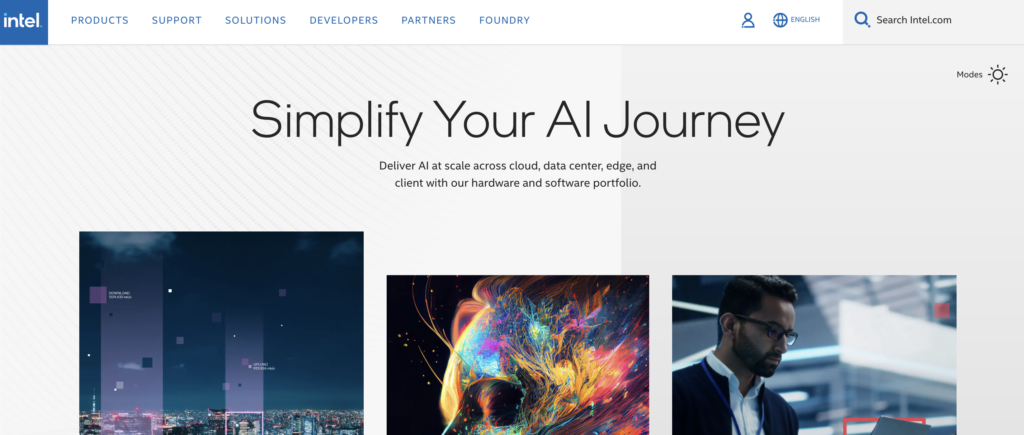
Or, for a more specific example, you've got Intel, which provides semiconductor chips to major computer manufacturers.
Distributors (the intermediary-oriented model)
A distributor acts as a “middleman” of sorts, purchasing large quantities of goods from manufacturers and selling them to B2B customers.
They handle the marketing, packaging, selling, and shipping of products created by a manufacturer.
Most manufacturers happily leave these parts of B2B selling to someone else so they can keep doing what they do best.
For example, a distributor may buy car parts in bulk and then sell those parts to a vehicle manufacturer.
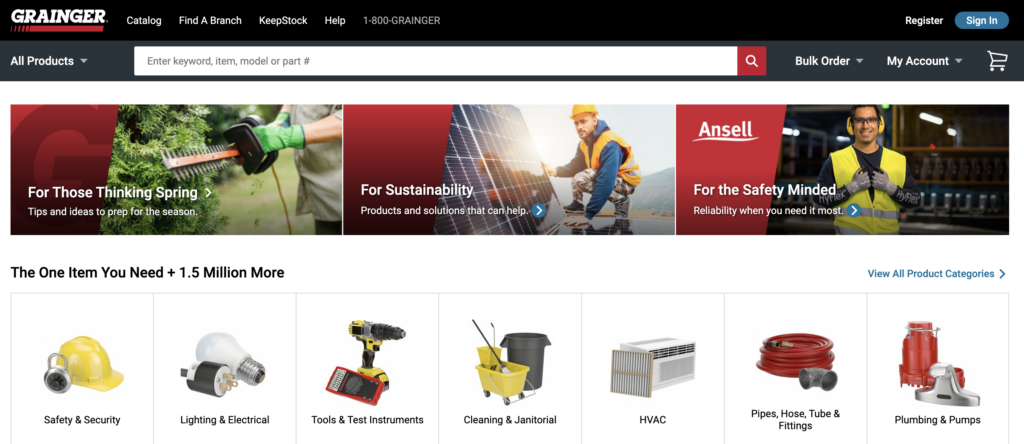
A real life example of a distributor would be Grainger, which distributes maintenance, repair, and operating supplies to many types of businesses.
4 Stages of B2B Ecommerce Businesses
As with any business, B2B companies come in various sizes and stages of maturity.
From infancy to enterprise, let’s look at the stages of a B2B brand to see how it evolves over time.
Start-up
The start-up stage is when a B2B ecommerce company first launches.
Depending on your business needs, you may use this stage to find investors or put together a team of talented employees who can help the business move into the next stage.
Before making many B2B sales, you need to learn about digital commerce and ensure your website offers the right level of functionality.
Key Actions:
- Set up a functional, scalable ecommerce website.
- Build a foundational team skilled in ecommerce operations, sales, and customer support.
- Secure initial funding if necessary and establish clear financial and operational goals.
Challenges:
- Limited resources and expertise in fully leveraging digital commerce.
- Building brand recognition and trust with potential customers.
- Managing cash flow with initial investments before sales stabilize.
Metrics for Success:
- Website traffic and user engagement rates.
- Number of leads generated and conversion rates.
- Customer feedback and satisfaction scores.
Growth
In the growth stage, you have a steady flow of customers, giving you enough revenue to keep operating.
During this stage, you can focus more on the customer experience and look for new ways to automate sales transactions.
Anything you can do to streamline your business during the growth stage helps move you into the expansion stage.
Key Actions:
- Enhance website functionality with features like improved search, customer reviews, and personalization.
- Automate key business processes such as order processing and inventory management.
- Expand marketing efforts to increase reach and refine targeting based on customer data.
Challenges:
- Scaling operations efficiently to handle increased order volumes.
- Maintaining customer service quality as customer base grows.
- Continuously adapting to competitive market conditions and customer expectations.
Metrics for Success:
- Revenue growth and profitability.
- Customer acquisition and retention rates.
- Operational efficiency (e.g., order fulfillment time and cost reduction).
Expansion
During the expansion stage, B2B sellers expand into new markets or find additional distributors for their products and services.
If you’ve made it to the expansion stage, you may want to look for ways to continue generating revenue once sales of your current product start to plateau.
For example, if you sell payroll software, you might want to expand into recruiting software.
Key Actions:
- Enter new markets, possibly international, with tailored marketing strategies.
- Diversify product lines or services to meet broader customer needs and reduce dependence on a single product.
- Strengthen partnerships and build networks with other businesses and distributors.
Challenges:
- Navigating different market regulations and cultural preferences in new regions.
- Managing logistical complexities of a larger operation.
- Integrating new products or services smoothly with existing offerings.
Metrics for Success:
- Market share in new regions or sectors.
- Success rate of new product launches.
- Customer base diversity (geographic and demographic).
Maturity
Once you’re in the maturity stage, you have loyal customers and a strong brand image.
During this stage, your revenue remains steady, but that doesn’t mean you can sleepwalk through your day-to-day operations.
Continue looking for ways to optimize your website or update your pricing strategy to attract new customers and retain as many current customers as possible.
Key Actions:
- Continually innovate product offerings and improve the online customer experience (perhaps by investing in headless commerce).
- Optimize operational processes through advanced technologies and data analytics for real-time insights.
- Focus on customer loyalty programs and retention strategies.
Challenges:
- Staying competitive and relevant in a saturated market.
- Evolving with technological advancements and changing market dynamics.
- Retaining customer engagement and managing an extensive product portfolio.
Metrics for Success:
- Customer lifetime value and loyalty indices.
- Brand recognition and market position.
- Efficiency gains in operations and cost management.
Examples of B2B Ecommerce Companies
These are some of the most popular B2B companies in the United States.
Before you review the list, you should know that many companies sell products to both businesses and consumers. Don’t be surprised if you recognize many—if not all—of these companies from doing your own personal shopping.
Microsoft

Microsoft sells a variety of B2B products and services, including cloud solutions for specific industries.
For example, Microsoft Cloud for Financial Services enables financial companies to automate their workflows, increase engagement, and create detailed customer profiles.
Faire

This well-known online wholesale marketplace connects small retailers with independent brands and makers so they can sell unique products to a wider audience.
Wholesale marketplaces like this enable mission-driven brands to grow their businesses without losing their brand vision.
Bombas
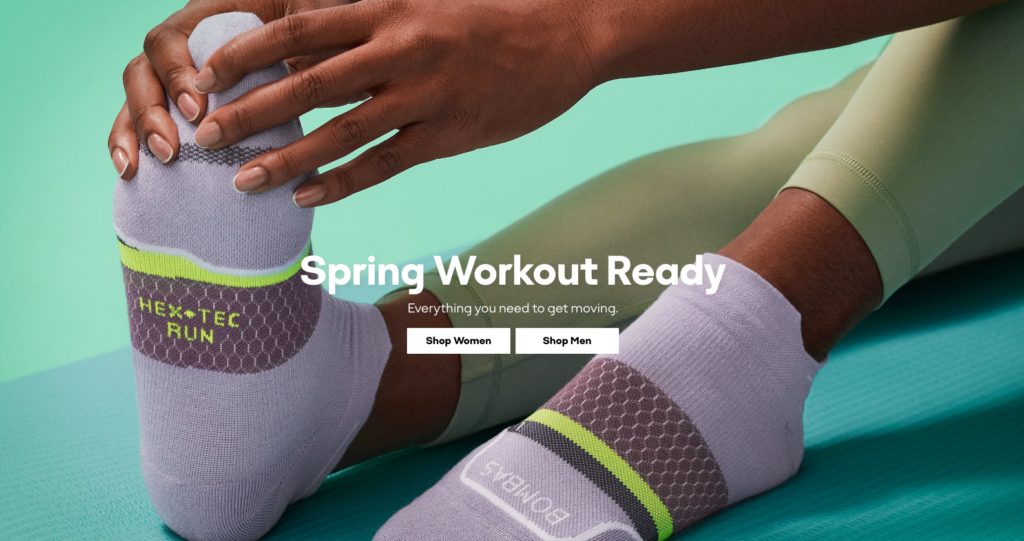
Although Bombas is a big name in DTC socks, they’ve gotten even bigger by leveraging its wholesale arm to get their products in Nordstrom, Dick’s Sporting Goods, and Athleta stores.
While it runs counter to the direct-to-consumer (DTC) ethos, this move allows these brands to expand outside of purely online sales (or within their own branded brick-and-mortar locations).
FedEx
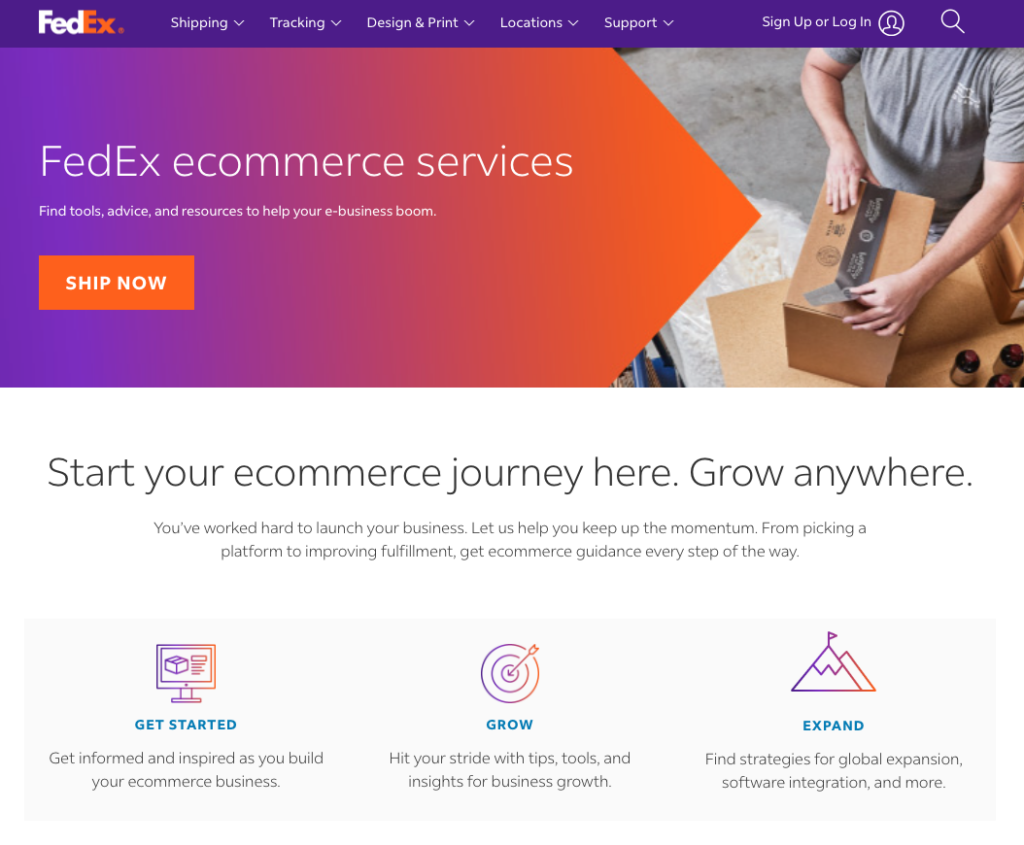
Sure, FedEx delivers packages to homes worldwide, but it also has a robust B2B business.
Many decision-makers rely on FedEx to deliver raw materials, business equipment, and important documents to their clients and colleagues. As a result, FedEx is a critical component of the supply chain for many companies.
DocuSign
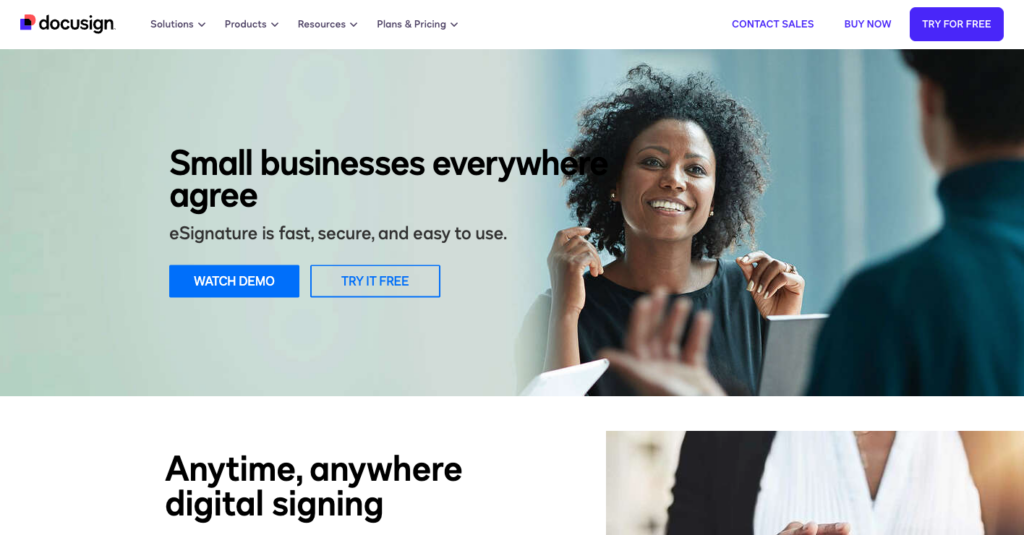
DocuSign makes it possible for users to sign documents electronically, reducing the time it takes to close lucrative deals.
Many procurement departments use DocuSign to finalize contracts, as it’s much easier to obtain electronic signatures than it is to print multiple copies of a lengthy contract and mail them to every person who needs to sign them.
Amazon Business
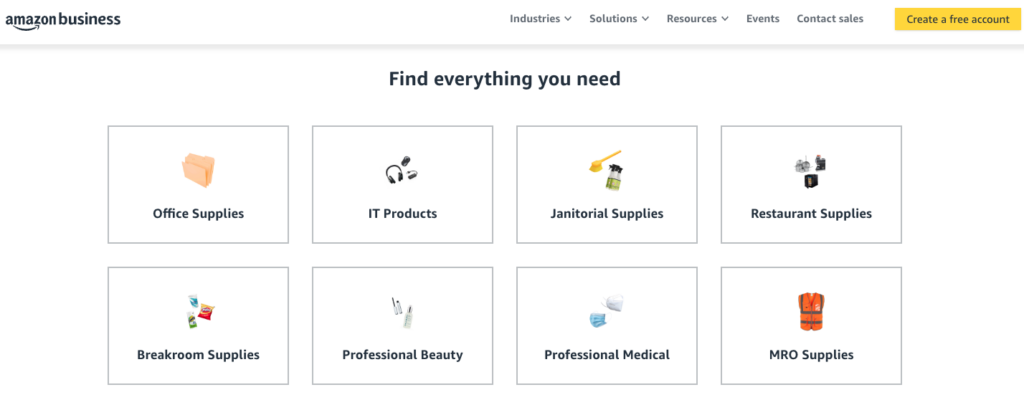
You may know Amazon as an online marketplace where you can buy everything from pet food to Halloween costumes, but it’s also one of the world's biggest B2B ecommerce companies.
The Amazon Business sales team offers business-only pricing on thousands of items, including bulk office supplies and furniture designed for commercial spaces.
General Electric

General Electric doesn’t just make light bulbs. It also manufactures a full line of healthcare equipment, including CT scanners, MRI machines, ventilators, and patient monitors.
It sells these items to hospitals and other medical facilities around the world.
6 B2B Ecommerce Marketing Strategies to Grow Your Store
You could offer the best user experience in the world.
Still, people in your target audience won’t know about it unless you develop successful B2B ecommerce marketing strategies.
Here are some of the most effective ways to promote a B2B business to key decision-makers.
1. Get good at social media marketing
You may think that social media is for teenagers with too much time on their hands.
You’d be very mistaken. Just look at Meta’s latest ad numbers to see how effective social media is at convincing people to buy.
The fact is, social media marketing is one of the most effective ways to connect with potential customers. Even if your prospective customer is a business.
Enter LinkedIn, a land full of very specific job titles (AKA, targeted decision makers). LinkedIn is super powerful for getting your product or service in front of executives and other leaders you are targeting.
You can use a combination of organic brand presence on the platform (posting, commenting, connecting) with paid ad opportunities that leverage the stakeholders in product purchasing decisions.
2. Earn organic traffic with content marketing
Content marketing involves distributing relevant, useful content to your target audience.
If you want to sell to business buyers, look for opportunities to create content that helps them save time, save money, reduce waste, or increase productivity.
The best type of content depends on what you sell and what your customers need.
For getting organic SEO traffic from Google and the like, you’ll want to do keyword research to figure out the questions your audience needs answers to, from top of the funnel awareness topics down to bottom of the funnel sales enablement content.
If you have a large ecommerce website, you may want to publish a buyer’s guide for each type of product you sell. If you sell bigger, more expensive products, you’ll want to invest in content that can help your sales team close.
3. Leverage PPC ads to drive extra qualified traffic
Even if your online store brings in the bulk of your business via organic traffic, it’s still important to do some digital advertising to back it up.
Pay-per-click (PPC) advertising, sponsored search ads, and other forms of advertising can help you attract new customers and make them aware of your business.
The rule for running paid ads is you keep spending until the ROI stops paying out. If the ads work, and they bring in more than you pay, keep going.
4. Get personal with email marketing
Gone are the days of spending thousands of dollars on product catalogs. That antiquated and impersonal strategy ceased to be useful with the increase in online shopping and better customer data.
The top B2B brands use email marketing to send personalized messages to their customers.
If you’ve driven significant newsletter signups and have implemented thoughtful segmentation, you’ll be able to send the right messages to the right people at the right time.
Before you send your first email, get clear on customer needs and tailor your content accordingly. Don’t send too often and keep giving them a reason to open.
Nobody wants to get tossed in the spam folder.
5. Build a customer review strategy for social proof
Positive customer reviews are worth their weight in gold, especially when you’re selling to B2B buyers.
These customers take their time to come to a purchasing decision, consider their options carefully, and research potential red flags doggedly.
Make your brand worthy of great reviews and you’ll see a cascade of new customers (with great reviews) to follow.
To make reviews work for you, encourage customers to post testimonials on your digital channels and reviews on sites like Google and Trustpilot.
If you make in-person sales, instruct your team members to ask customers to leave a review when they have a minute.
After a successful sale, you should have an email sequence lined up to capture that positive energy in the form of a review.
6. Add extra sales channels to widen your audience
Don’t be afraid to use other sales channels to promote your products or services. These days, a multichannel (and omnichannel) approach is a must.
Joining a B2B marketplace can help you get your business in front of new customers, accelerating your progress from the start-up stage to the growth stage.
While your owned storefront is your central strategic stronghold, there are some customers you can only reach via other channels. Research your industry to find the best places to expand into.
This is just one of many ecommerce tools available to you to supercharge your business and it definitely shouldn't be slept on.
Best B2B Ecommerce Platforms to Scale Your Store
Not all ecommerce platforms are great for B2B transactions, as complex as they can be.
So, if you are transitioning to B2B selling, you need to use one of the best platforms for B2B ecommerce sales. You can find our reviews of these B2B ecommerce solutions at that link, but here’s a quick rundown of them.
| Platform | Pricing | Type of Tool | Free Plan or Trial |
| Wix eCommerce | Starts at $20/month | Website Builder | 14-day free trial |
| Shopify | Starts at $29/month | All-in-one | 3-day free trial |
| BigCommerce | Starts at $29.95/month | All-in-one | 1-month free trial |
| Liferay | Custom quote | Customized web experiences | No free trial |
| Episerver | Custom quote | AI-driven personalized experiences | No free trial |
| OroCommerce | Free community edition; custom pricing for enterprise | Open-source | Free community edition |
| Handshake | Supported by Shopify, no specific pricing disclosed | Marketplace | US market only |
| Williams Commerce | Not provided | Magento-based services | No free trial |
| B2B Wave | Starts at $160/month | SaaS for wholesale distributors | No free trial |
| MeGaDev | Custom pricing | Custom ecommerce platform development | No free trial |
Another option for more mature B2B brands with dreams of scaling is going headless.
Headless commerce has become more mainstream in recent years, allowing more brands to deliver super fast and performant customer experiences without relying on one single platform.
You can read more about how it works in our guide to headless commerce and find the best headless ecommerce platforms to level up your ecommerce store.
Need Help Finding The Perfect Ecommerce Solutions For Your Brand?
If you’re struggling to choose the right software, let us help you. Just share your needs in the form below and you’ll get free access to our dedicated software advisors who match and connect you with the best vendors for your needs.
Discover How to Grow a Successful B2B Business
With so much growth on the horizon, you should be jumping for joy at all the opportunities available in the B2B industry.
Whether you are an entrepreneur just starting a B2B brand or a DTC company hoping to expand into B2B, there are great opportunities available.
By understanding your market, leveraging the right growth strategies, and using a platform that can scale with you, your B2B dream can become a B2B reality.
At The Ecomm Manager, we’re committed to helping you attract new customers and build mutually beneficial partnerships.
Subscribe to The Ecomm Manager newsletter to learn how to get out of the start-up phase as quickly as possible.
B2B Ecommerce FAQs
Last thing, let’s talk through some final lingering questions on the topic.
What are the best practices for B2B ecommerce customer experience?
To elevate the B2B ecommerce customer experience, aim for a platform that rivals top-tier B2C sites in usability and accessibility. Essential features include personalized accounts, order tracking, and tailored pricing options.
A responsive, intuitive site layout is vital—ensure comprehensive product details and support resources are at hand to aid customers in making well-informed choices.
How do you measure the success of a B2B ecommerce strategy?
The effectiveness of a B2B ecommerce strategy is gauged by monitoring key metrics that reflect operational efficiency and customer satisfaction.
Prioritize KPIs such as conversion rates, average order value, customer acquisition costs, and customer retention rates. Additionally, sourcing regular customer feedback can yield qualitative insights, revealing how your platform aligns with user expectations.
How can I integrate my existing CRM and ERP systems with a B2B ecommerce platform?
For integrating CRM and ERP business systems with a B2B ecommerce platform, select a solution that supports extensive APIs or offers native integration capabilities.
Collaborate with IT experts to design a seamless integration strategy, ensuring continuous, accurate data exchange across systems. This integration not only optimizes workflow but also improves the customer experience by enabling a cohesive management of customer interactions and transactions.


